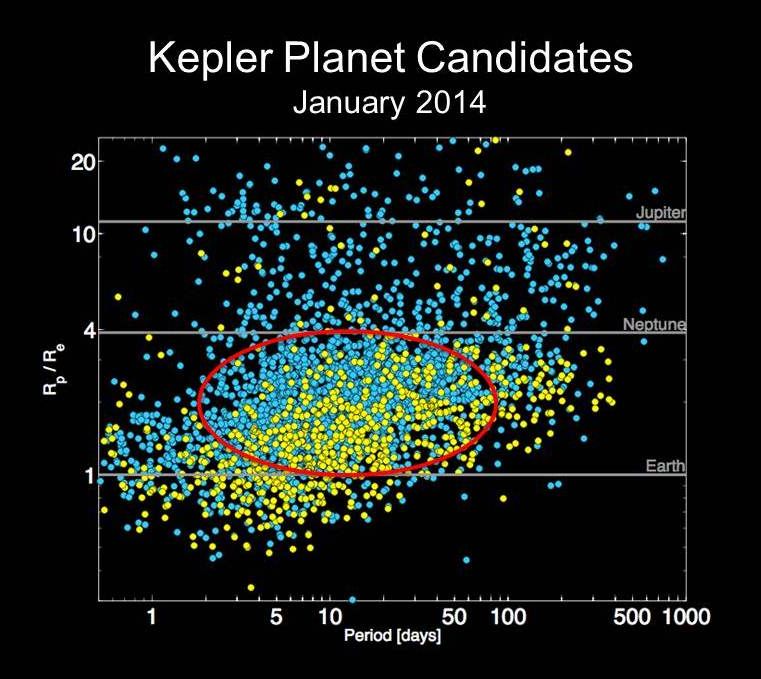More than three-quarters of the planet candidates discovered by NASA’s Kepler spacecraft have sizes ranging from that of Earth to that of Neptune, which is nearly four times as big as Earth. Such planets dominate the galactic census but are not represented in our own solar system. Astronomers don’t know how they form or if they are made of rock, water or gas.
The Kepler team today reports on four years of ground-based follow-up observations targeting Kepler’s exoplanet systems at the American Astronomical Society meeting in Washington. These observations confirm the numerous Kepler discoveries are indeed planets and yield mass measurements of these enigmatic worlds that vary between Earth and Neptune in size.
Included in the findings are five new rocky planets ranging in size from ten to eighty percent larger than Earth. Two of the new rocky worlds, dubbed Kepler-99b and Kepler-406b, are both forty percent larger in size than Earth and have a density similar to lead. The planets orbit their host stars in less than five and three days respectively, making these worlds too hot for life as we know it.
A major component of these follow-up observations were Doppler measurements of the planets’ host stars. The team measured the reflex wobble of the host star, caused by the gravitational tug on the star exerted by the orbiting planet. That measured wobble reveals the mass of the planet: the higher the mass of the planet, the greater the gravitational tug on the star and hence the greater the wobble.
Using one of the world’s largest ground-based telescopes at the W. M. Keck Observatory in Hawaii, scientists confirmed 41 of the exoplanets discovered by Kepler and determined the masses of 16. With the mass and diameter in-hand, scientists could immediately determine the density of the planets, characterizing them as rocky or gaseous, or mixtures of the two.
